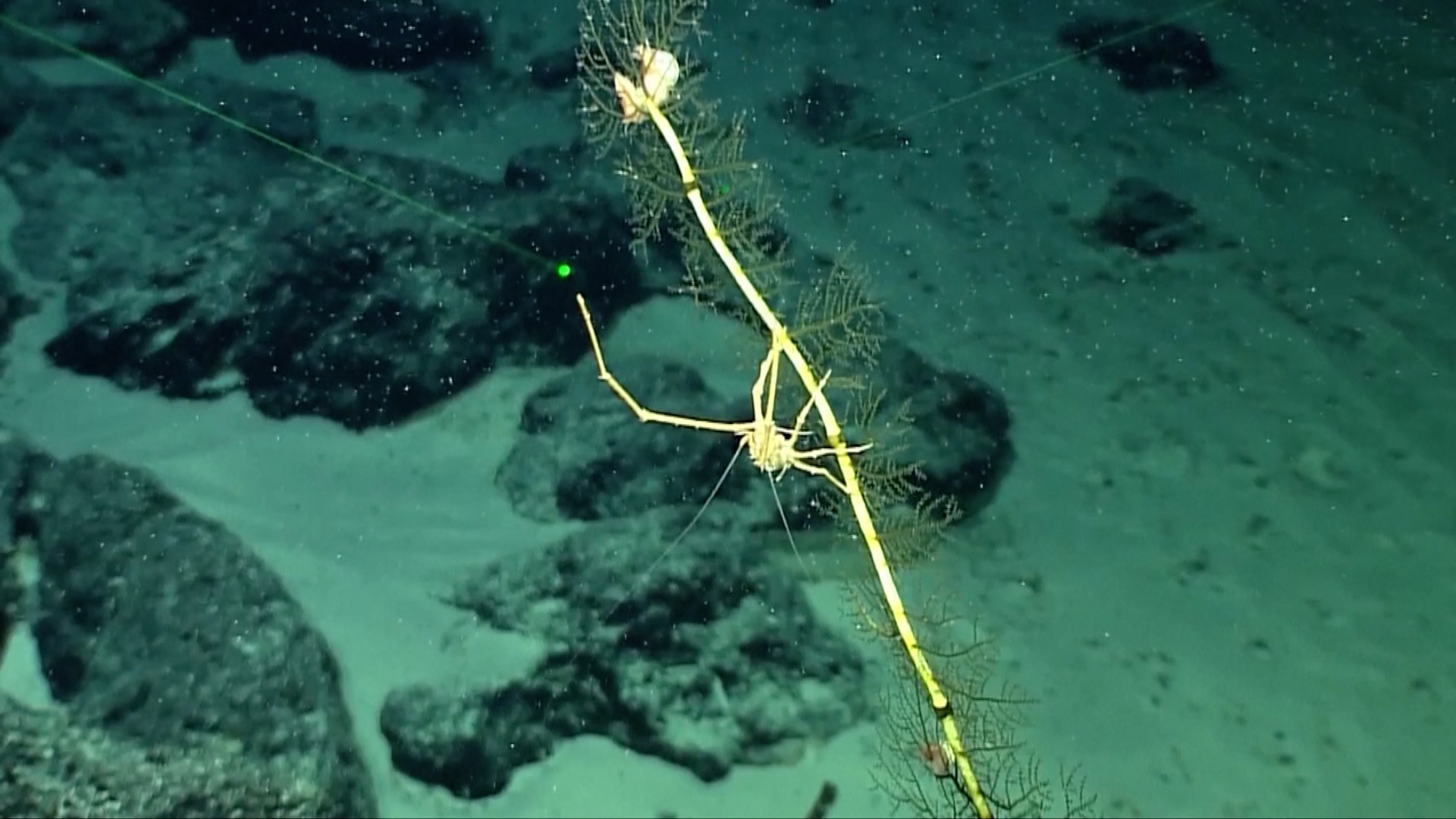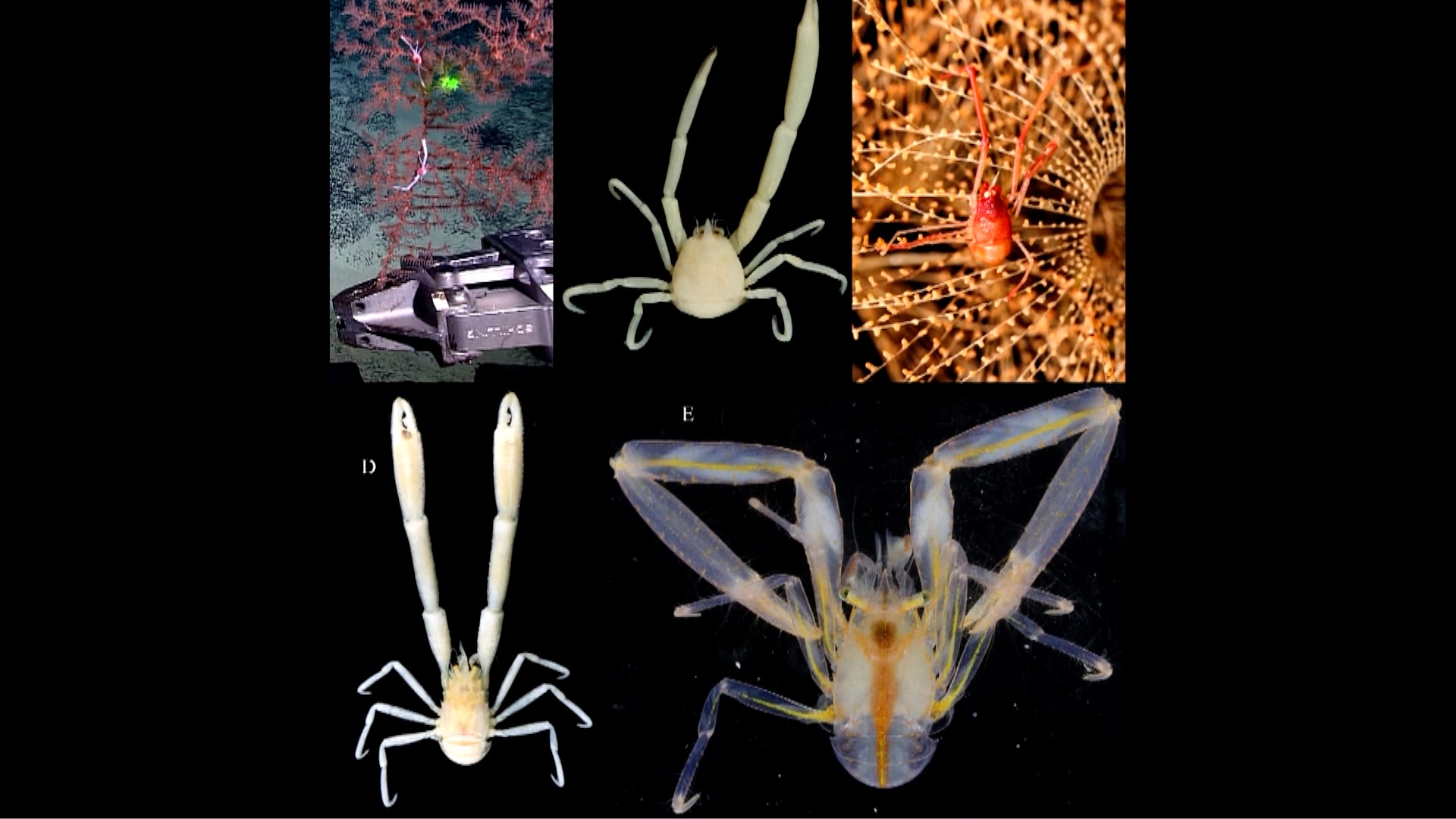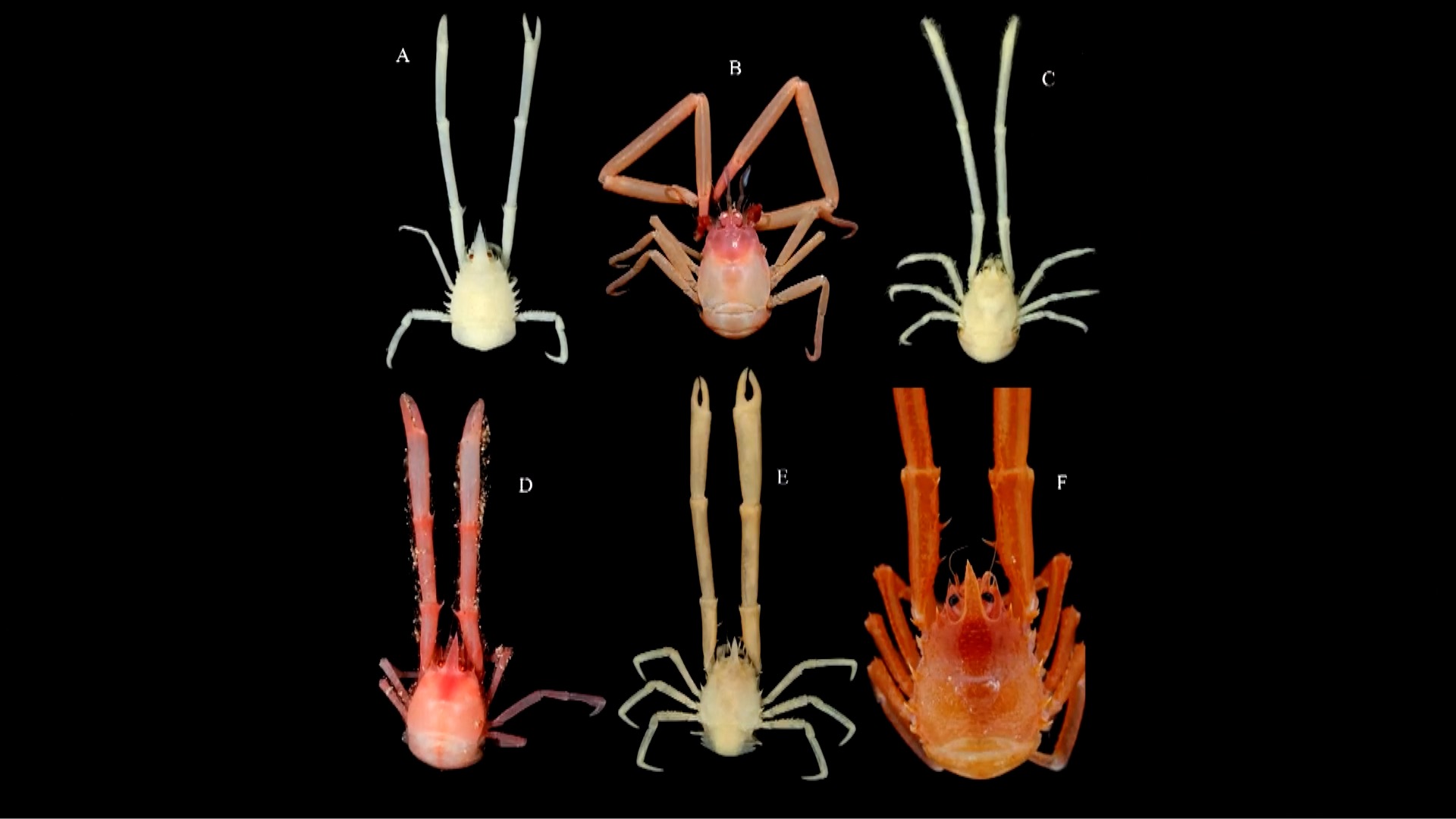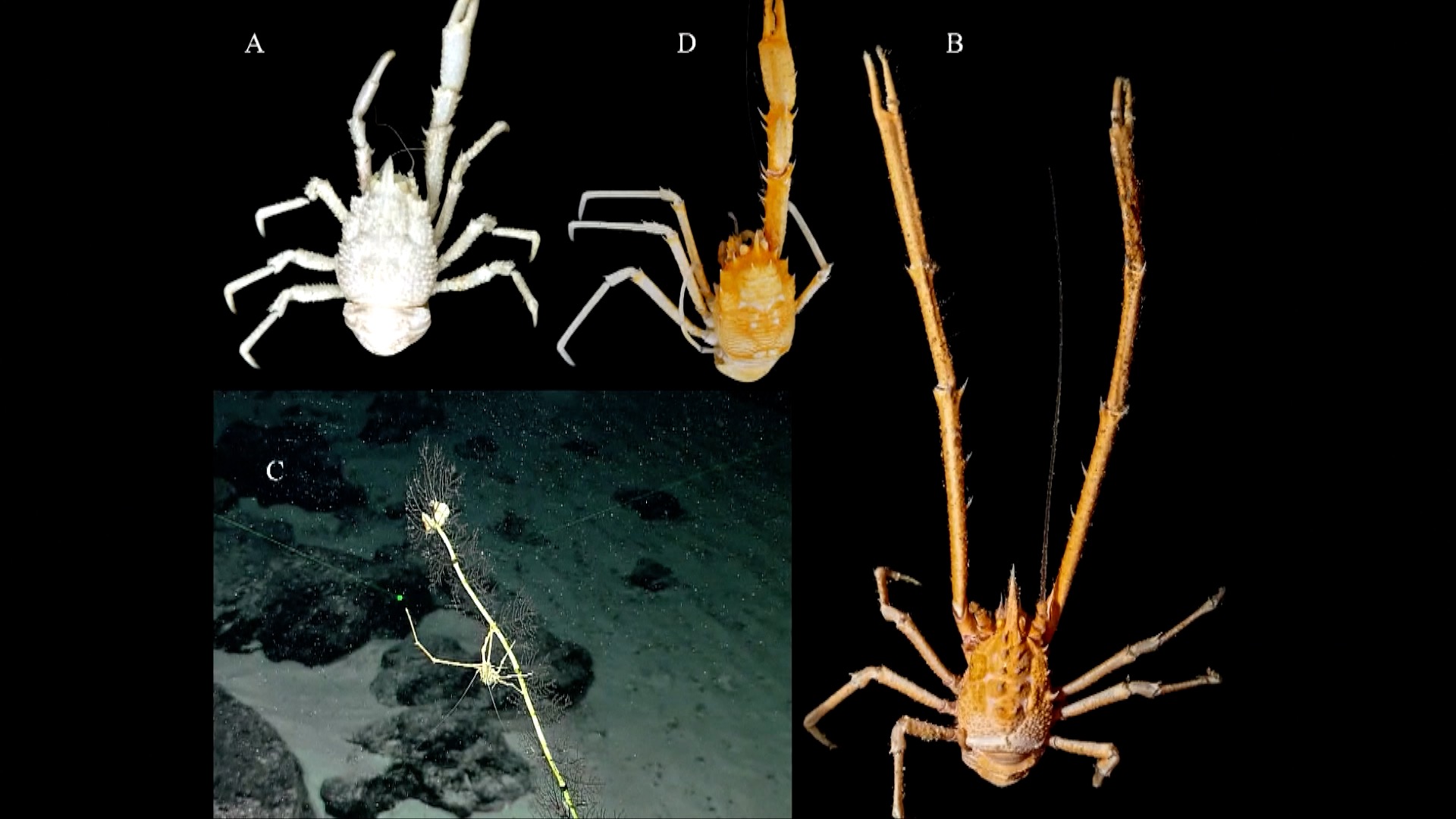01:09

The Chinese Academy of Sciences' Institute of Oceanology in Qingdao City, east China's Shandong Province, recently cataloged 11 new species of squat lobsters in the Yap and Mariana trenches of the western Pacific Ocean.
The descriptions are included in an academic paper published online in the Linnean Society's Zoological Journal on March 12.
Seamounts are well known for their abundant biodiversity and local concentrations of species. Hundreds of squat lobster species from seamount environments have been reported in recent years, but squat lobster fauna on the seamount groups around ocean trenches in the tropical western Pacific are still poorly known, according to the paper's abstract.

Eleven new species of squat lobsters found in the Yap and Mariana trenches have been cataloged by the Chinese Academy of Sciences' Institute of Oceanology. /Screenshot from the video
Eleven new species of squat lobsters found in the Yap and Mariana trenches have been cataloged by the Chinese Academy of Sciences' Institute of Oceanology. /Screenshot from the video

Eleven new species of squat lobsters found in the Yap and Mariana trenches have been cataloged by the Chinese Academy of Sciences' Institute of Oceanology. /Screenshot from the video
Eleven new species of squat lobsters found in the Yap and Mariana trenches have been cataloged by the Chinese Academy of Sciences' Institute of Oceanology. /Screenshot from the video

Eleven new species of squat lobsters found in the Yap and Mariana trenches have been cataloged by the Chinese Academy of Sciences' Institute of Oceanology. /Screenshot from the video
Eleven new species of squat lobsters found in the Yap and Mariana trenches have been cataloged by the Chinese Academy of Sciences' Institute of Oceanology. /Screenshot from the video
The paper said the 11 new species were determined based on specimens collected during expeditions to seamounts around the Yap Trench and Mariana Trench.
The researchers also provided DNA barcode data for three genes in support of the taxonomic status of the new species.
(Photos are screenshots from the video.)
(If you want to contribute and have specific expertise, please contact us at nature@cgtn.com.)
Source(s): China Daily

